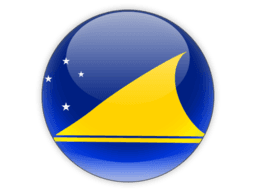
Regions of Tokelau
Explore 3 regions
Cities of Tokelau
Discover 3 cities across 3 regions
Nukunonu(1)
Tokelau is a dependent territory of New Zealand located in the South Pacific Ocean. It consists of three coral atolls (Atafu, Nukunonu, and Fakaofo) with a total land area of only 10 square kilometers. The population of Tokelau is approximately 1,500 people, who are mainly of Polynesian descent and speak Tokelauan, English, and Samoan.
Tokelau has a non-partisan system of government, with an elected council called the General Fono that oversees the territory's affairs. The General Fono consists of 15 elected members, with 10 from the atolls and 5 from overseas. The leader of the General Fono is known as the Ulu-o-Tokelau and is appointed on a rotating basis.
The economy of Tokelau is largely subsistence-based, with fishing and agriculture being the main sources of income. The territory also receives financial assistance from New Zealand, which helps to support its infrastructure and social services. Tokelau uses the New Zealand dollar as its currency and is heavily reliant on imports for its basic necessities.
Due to its small size and isolation, Tokelau faces several challenges, including limited economic opportunities, a lack of infrastructure, and vulnerability to natural disasters. However, the territory has made strides in recent years to improve its resilience and sustainability, including investing in renewable energy and expanding its telecommunications infrastructure.
Geography
Area
total: 12 sq km
land: 12 sq km
water: 0 sq km
Climate
tropical; moderated by trade winds (April to November)
Natural resources
Fisheries
People and Society
Population
1,647 (2019 est.)
Ethnic groups
Tokelauan 64.5%, part Tokelauan/Samoan 9.7%, part Tokelauan/Tuvaluan 2.8%, Tuvaluan 7.5%, Samoan 5.8%, other Pacific Islander 3.4%, other 5.6%, unspecified 0.8% (2016 est.)
Languages
Tokelauan 88.1% (a Polynesian language), English 48.6%, Samoan 26.7%, Tuvaluan 11.2%, Kiribati 1.5%, other 2.8%, none 2.8%, unspecified 0.8% (2016 ests.)
Religions
Congregational Christian Church 50.4%, Roman Catholic 38.7%, Presbyterian 5.9%, other Christian 4.2%, unspecified 0.8% (2016 est.)
Population growth rate
-0.01% (2019 est.)
Government
Government type
parliamentary democracy under a constitutional monarchy
Economy
Economic overview
small New Zealand territorial island economy; labor force can work in New Zealand or Australia; significant remittances; largely solar-powered infrastructure; reliant on New Zealand funding; stamp, coin, and crafts producer
Real GDP (purchasing power parity)
$7,711,583 (2017 est.)
Real GDP per capita
$6,004 (2017 est.)
Agricultural products
coconuts, roots/tubers, tropical fruit, pork, bananas, eggs, poultry, pig offals, pig fat, fruit
Industries
small-scale enterprises for copra production, woodworking, plaited craft goods; stamps, coins; fishing
Exports
$103,000 (2015 est.)
Exports - partners
Singapore 25%, France 19%, South Africa 7%, New Zealand 5%, United States 5%, Ireland 5% (2019)
Exports - commodities
oscilloscopes, house linens, fruits, nuts, recreational boats, iron products (2019)
Imports
$15,792,720 (2015 est.)
Imports - partners
Samoa 35%, Ireland 17%, Philippines 14%, Malaysia 13%, South Africa 9% (2019)
Imports - commodities
oscilloscopes, integrated circuits, refined petroleum, packaged medicines, orthopedic appliances (2019)
Mark Tokelau as Visited
Add Tokelau to your personal travel map and track your journey around the world. Share your adventures and see your progress grow!